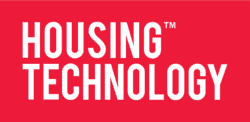Social housing developments are often home to the most vulnerable people, from the elderly who need 24/7 homecare support to those living with disabilities or impairments. In short, IoT makes their homes safer. There are many examples of IoT applications, from devices to detect leaks before they become a problem to smoke detectors being able to call the fire service direct.
Empowering tenants
From an entry and access control point of view, there are many advantages of IoT technologies. At the simplest level, it enables tenants to open their door from a mobile device, talk to a visitor without authorising entry to ensure they know who they are, and answer calls to their door when they’re out.
Remote control
Social housing has seen large growth in the use of smart systems, with a focus on fault finding/reporting and remote management, saving time, money and reducing carbon emissions. For example, in the past, a housing provider wanting to update its list of residents for a certain property would have had to arrange for a housing officer to visit the property, only to then find that they don’t have the correct key, whereas with an IoT smart solution, they can programme a new key fob there and then. The same applies when a tenant needs to be removed or their entry authorisation edited.
Automatic diagnostics
Another great use for IoT entry systems is if there is a fault on the system, alerts can be automatically sent back to the housing provider’s back-office systems. This saves time with on-site fault finding and can also give a good indication of which parts might be faulty. Other alerts or email notifications can also be sent about, say, a fire door being propped open; the operator can then see who the last person to unlock the door in question was so that they can be contacted.
Centralised reporting
Another benefit is that all local alarms can be received and transmitted back to a central hub. In a pre-IoT world, if a property has fire, intruder and flood alarms, these would all have to be received and managed separately, but if they are all IoT-enabled, all alarm signals can be managed from a single point and via one operator.
IoT developments will continue to bring even more benefits, helping to provide safe and convenient access control management to housing providers and their tenants.
James Gray is the national sales manager for Videx Security.

